Advertisements
Advertisements
प्रश्न
(a) Name the two growth models that represent population growth and draw the respective growth curves they represent.
(b) State the basics for the difference in the shape of these curves
(c) Which one of the curves represents the human population growth at present? Do you think such a curve is sustainable? Give reason in support of your answer.
उत्तर
(a) Two types of growth models:
1) Exponential growth: When resources are unlimited, the population tends to grow in an exponential pattern. If the population size is N and the birth and death rates are b and d, respectively, then the increase or decrease in N at t (time period) is
dN/dt=(b-d)*N
if (b-d)=r, then
dN/dt=rN
r is the intrinsic rate of natural increase.
Or
Nt=Nοert
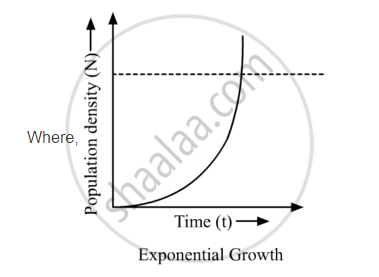
Nt: Population density at time t
N0: Population density at time 0
r: Intrinsic rate of natural increase
e: Base of natural logarithm (2.71828)
2) Logistic growth: When the resources are limited leading to competition between individuals and survival of the fittest, the population tends to grow logistically. In this kind of growth, there is an initial lag phase followed by acceleration or deceleration phases, and finally asymptote, when it reaches its carrying capacity (K). When N in relation to t is plotted, it results in a sigmoid curve which is
dN/dt=rN`((K-N)/K)`
N: Population density at time t
r: Intrinsic rate of natural increase
K: Carrying capacity
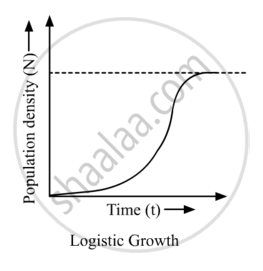
(b) The difference in the shape of these curves is the amount of resources available for the given population. For exponential growth, the amount of resources is considered infinite, while in logistic growth, there is limited amount of resources available.
(c) The present human population is following the logistic growth curve because the number of human beings is increasing rapidly but the available resources are not increasing at the same pace. Such a growth pattern is not sustainable because at one point the human population would reach a place where there would not be enough resources for everyone. For sustainable growth, we must find ways to develop and use already present resources more intelligently.
APPEARS IN
संबंधित प्रश्न
Study the graph given below and answer the questions that follow :
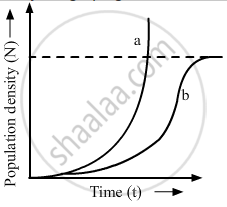
(i) Write the status of food and space in the curves (a) and (b).
(ii) In the absence of predators, which one of the two curves would appropriately depict the prey population?
(iii) Time has been shown on X-axis and there is a parallel dotted line above it. Give the significance of this dotted line
If a population growing exponentially double in size in 3 years, what is the intrinsic rate of increase (r) of the population?
What is an age-pyramid?
Study the flow chart given below and complete the equation that follows by identifying 1, 2, 3 and 4.
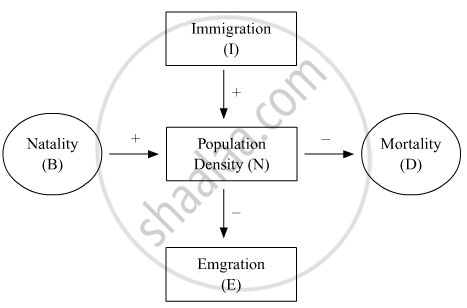
Nt + 1 = Nt + {(1+ 2) − (3 + 4)}
Measures of ‘Central tendency’ refer to:
`"dN"/"dt" = "rN" (("K"- "N")/"K")` in logistic growth "K" represents:
What parameters are used for tiger census in our country’s national parks and sanctuaries?
Comment on the following figures: 1, 2 and 3:
A, B, C. D, G, P, Q, R, S are species
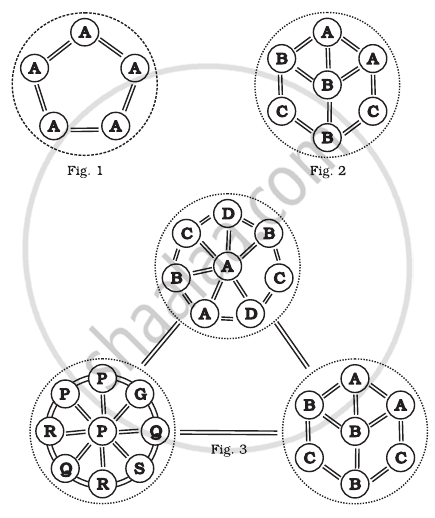
An individual and a population has certain characteristics. Name these attributes with definitions.
Given below is the Age Pyramid of the population in one of the states in India as per 2011 census. It depicts the male population on the left-hand side, female population on the right-hand side, newborns towards the base and gradually increasing age groups as we move from base to the top, with the oldest population at the top. Study this pyramid and comment upon the appropriateness of the Assertion and the Reason.
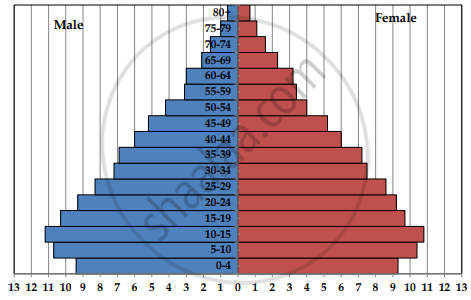
Percentage to the total population
Assertion: It is a stable population.
Reason: The pre-reproductive and reproductive individuals are almost in equal numbers and the post-reproductive individuals are relatively fewer.
